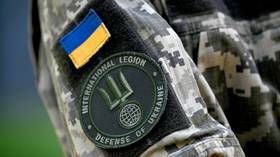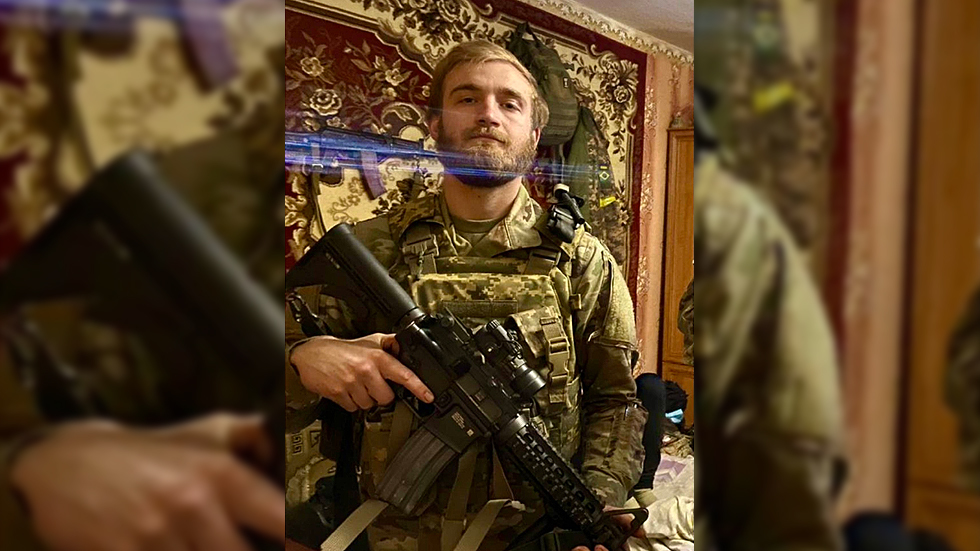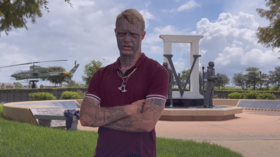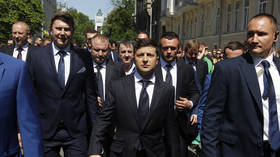The death of a US mercenary exposes the bleak reality of service with Ukraine’s 'International Legion'

It’s been confirmed that Trent Davis, a 21-year-old US citizen who travelled to Ukraine to fight in the International Legion, has been killed in combat. The tenth American known to have met their end in the conflict, his premature death highlights the enormous dangers facing foreigners joining Kiev’s fight.
Davis was an army veteran, having enlisted at just 17. However, he had no actual combat experience, having served as a chemical, biological, radiological and nuclear (CBRN) defense specialist, before leaving in December 2021.
He reportedly travelled to Ukraine in March to join the Georgian Legion, a unit so notorious for executing Russian prisoners of war that even the Western media has been forced to acknowledge its savagery. The foreign mercenaries, however, considered Davis incompetent and insufficiently experienced to take part in hostilities, so he was sent home two months later.
Davis returned in October, and two weeks later was overjoyed to inform his mother that he had signed a contract and was now officially part of the International Legion, created on 26 February by Ukrainian President Volodomyr Zelensky to attract foreign fighters.
“Anyone who wants to join the defense of Ukraine, Europe and the world can come and fight side by side with the Ukrainians,” Zelensky said in a statement at the time, in which he eased visa restrictions to facilitate their arrival.
Davis told his mother he would soon be heading out to fight in a counteroffensive in the south of Ukraine. His mother and father never heard from their son again. On 8 November, he was killed on his very first mission, as Ukrainian forces attempted to recapture Kherson.
The details of how Davis died are murky, although the greatest mystery of all is why he was hired by the International Legion in the first place, let alone sent to the front line on his very first outing. Officially at least, combat experience – which he of course lacked – and a “belief in freedom and democracy” are the basic requirements for enlistment in the unit.
When contacted by the Military Times, the International Legion declined to comment on why Davis was sent to the front, only remarking that “recruiting decisions are made by officers in western Ukraine,” and amazingly alleging: “no commander takes on inexperienced soldiers who did not have the appropriate training and skills.”
Clearly, a commander did in respect of Davis. And there is no reason to believe he is in any way unique.

Tales from another side
While mainstream outlets have completely ignored the corruption, brutality, and abuses that are a daily staple of life on the front line with the International Legion, foreigners who fought with them aren’t silent about the horrors they witnessed first-hand, and have openly discussed their experiences in YouTube interviews and via other mediums.
Take, for example, a former US marine who fought with the International Legion, who has revealed that Ukrainian commanders don’t have radios, artillery cover or extraction teams for wounded soldiers, and testified to a thriving black market for Western weapons, such as anti-tank missiles.
He reported that these weapons would be collected in unmarked vans and ferried away to places unknown. In public, Western officials deny that any arms sent to Kiev have ended up on the black market, but the ex-marine claims US officials he encountered acknowledged that “low-level” corruption was endemic. It has, moreover, been confirmed that at least some of this arsenal is circulating in Europe.
The corruption he encountered took other forms. Foreign soldiers of fortune were offered financial inducements for destroying Russian vehicles and aircraft, which led to them fighting over rewards – pointlessly as it happened, given the reward money “often” wasn't paid at all.
Another former International Legion fighter echoed much of the ex-marine’s reports, alleging that NATO anti-aircraft guns constantly disappeared from his unit’s armory within days of arrival, but the Ukrainian Security Service, despite knowing about this, did nothing. Commanders who were reported to superiors for their complicity in this criminal activity also went unpunished.
“Volunteers don't trust Ukrainian authorities because of how corrupted they are. For so many people war is profitable... It's hard to find reliable sources where your supplies and equipment can reach the right people,” the former fighter said. “They keep stealing left and right. The problem in Ukraine is that it's in their culture... Looks like they steal from all levels.”
Complicating the International Legion’s battle even further, in the south and east of Ukraine its fighters frequently encounter significant hostility towards them and Ukrainian soldiers from the local population, who provide information to Russian forces leading to their ambush and capture, if not destruction.

“The problem with Donetsk is that it is highly pro-Russian... there is a really serious issue with so many pro-Russian civilians,” one foreign fighter has said. “For me it's hard to say how [Ukraine] can conduct the fight against all those ‘spies’ if you can call them that.”
One way Ukrainian forces fight against “spies” – alleged “collaborators” – is summary torture and execution. Shockingly, such bloodsoaked cleanup operations have been outright praised by the Western media, and hailed as symbols of Kiev’s “liberation” of territory. Anyone who helps Russian forces in any way can be considered a “collaborator”, but some – such as teachers – get off lighter, with harsh prison sentences.
It’s not merely citizens caught up in the conflict who need to be careful about who they assist. An Australian who joined the International Legion has claimed that Ukrainian commanders often sent foreign fighters to the most dangerous battles, with death almost guaranteed, using them as courageous war propaganda poster boys.
In some disturbing instances, if senior officials didn’t like a particular fighter, or group of fighters, they would even deliberately dispatch them on literal suicide missions. Once, the Australian mercenary said, a group of foreign recruits was ordered to walk across a minefield, without them knowing about the explosive devices lurking under the soil.
***
These are of course the assorted words of the International Legion volunteers who made it back – total fatality numbers are not known. In keeping with the Western media’s wider failure to seriously report on the reality on the ground, in favor of fantasy narratives about Ukrainian heroism and success, their cautions have fallen on deaf ears.
As the Russian winter offensive begins, this oath of silence may not be able to endure much longer. While Ukraine keeps its casualty figures a closely guarded state secret, Western officials have quietly admitted that at least 100,000 have lost their lives to date. There are surely many more Trent Davises in the ranks of the International Legion – and while dead men tell no tales, their families do.














